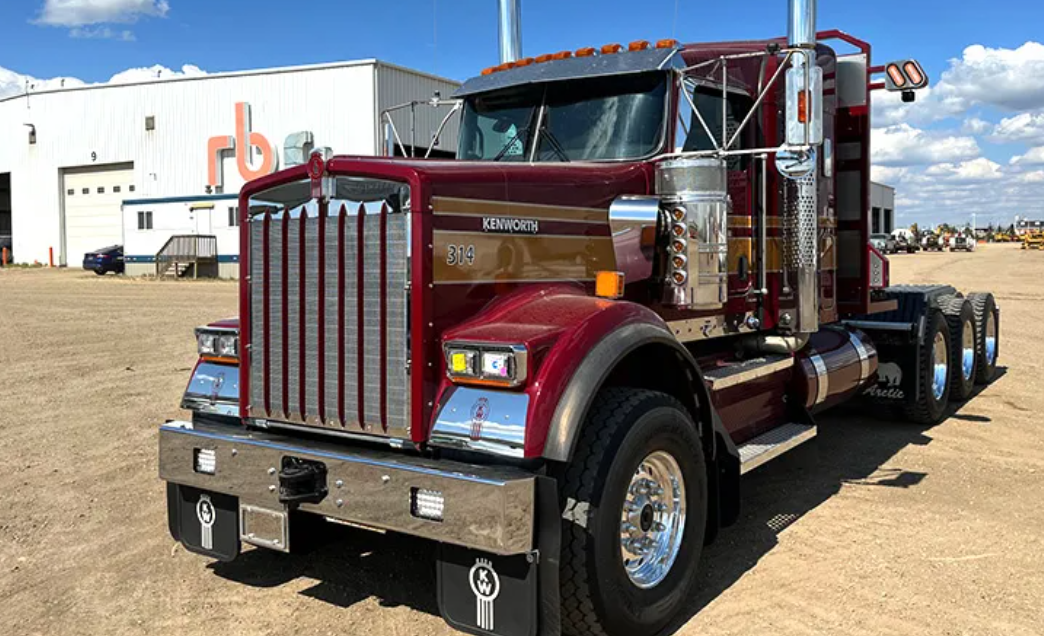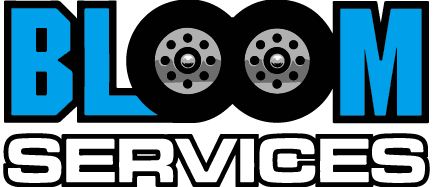The Ultimate Guide to Starting a Motor Carrier
Share this Article:
Written by: Bloom Services

So, you have been a professional trucker for some time now and want to advance our career, should you consider starting your own motor carrier? Starting a motor carrier will be challenging, but it can be extremely rewarding as well.
Here are several reasons why you might consider starting your own motor carrier:
- Independence: Owning a motor carrier allows you to be your own boss and have control over your business. You can set your own schedule and make your own decisions about how to run your business.
- Potential for financial success: The demand for transportation services is often high and starting a successful motor carrier can be a lucrative business opportunity.
- Personal fulfillment: Many people find satisfaction in building and growing their own business and starting a motor carrier can provide a sense of accomplishment and purpose.
- Opportunity to work in a dynamic field: The transportation industry is constantly evolving and owning a motor carrier can provide the opportunity to stay up to date on new technologies and industry trends.
However, it’s important to note that starting a motor carrier is not without its challenges. It requires a significant investment of time and resources, and there is always the risk of financial loss. Before starting a motor carrier, it’s important to carefully consider the potential risks and rewards and be prepared to work hard to succeed.
Steps for becoming a Motor Carrier
Starting a motor carrier may be daunting and it involves several steps, but it doesn’t have to be overwhelming. Here is a list of items you need to consider:
- Determine the type of motor carrier business you want to start. This could include a trucking company, a passenger transportation company, or a specialized carrier for a specific type of cargo.
- Obtain necessary licenses and permits. This will typically include a motor carrier operating license from the Federal Motor Carrier Safety Administration (FMCSA) and the appropriate state and local licenses and permits.
- Obtain liability insurance. Motor carriers are required to have liability insurance to cover damage or injuries caused by their vehicles.
- Purchase or lease vehicles. Depending on your business model, you may need to purchase or lease trucks, buses, or other commercial vehicles.
- Hire drivers. You will need to hire qualified drivers who have the necessary licenses and meet the requirements set by the FMCSA.
- Develop a business plan. A business plan will help you to define your business goals, identify your target market, and outline your marketing and operational strategies.
- Set up financial systems. This may include setting up a separate bank account for your business, obtaining financing, and establishing a system for tracking expenses and income.
Overall, starting a motor carrier business involves a significant amount of planning and organization, and it is important to carefully consider all the above steps to set your business up for success.
Types of Motor Carrier Businesses
It is important to figure out what type of motor carrier you want to start. There are several types of motor carrier businesses, including:
- Trucking company: A trucking company transports goods and materials by truck. This can include local delivery, long-haul transportation, or specialized services such as hazardous materials transport.
- Passenger transportation company: A passenger transportation company provides transportation services for people, such as bus or shuttle services.
- Specialized carrier: A specialized carrier provides transportation services for a specific type of cargo, such as refrigerated goods, livestock, or hazardous materials.
- Courier service: A courier service transports packages and documents on a local or regional basis.
- Private carrier: A private carrier provides transportation services exclusively for a single company or organization.
Overall, the type of motor carrier business you start will depend on your goals, resources, and target market. It is important to carefully consider your options and do research on the specific requirements and challenges of each type of business before deciding.
What types of Licenses and Permits do you need from FMSCA?
So, what types of licenses and permits are going to be necessary to start your motor carrier? Most licenses and permits will be issued by the FMCSA. The Federal Motor Carrier Safety Administration (FMCSA) is a division of the U.S. Department of Transportation (DOT) that regulates the trucking and passenger transportation industries. To operate as a motor carrier, you will typically need to obtain the following licenses and permits from the FMCSA:
- Operating authority: Also known as a “USDOT number,” operating authority is a permit that allows you to operate as a motor carrier in interstate commerce (across state lines). You can apply for operating authority through the FMCSA’s Unified Registration System (URS).
- Hazardous materials endorsement: If you plan to transport hazardous materials, you will need to obtain a hazardous materials endorsement for your operating authority.
- Drug and alcohol testing: Motor carriers are required to have a drug and alcohol testing program in place for their drivers. This includes conducting pre-employment, random, reasonable suspicion, post-accident, and return-to-duty testing.
- Vehicle safety inspection: Motor carriers are required to regularly inspect and maintain their vehicles to ensure they are safe to operate.
- Driver qualifications: Motor carriers are required to verify that their drivers meet the FMCSA’s qualifications and standards, including having a valid commercial driver’s license (CDL) and meeting medical and physical fitness requirements.
Overall, operating as a motor carrier involves complying with a few regulations and requirements set by the FMCSA. It is important to carefully review these requirements and ensure that you have obtained the necessary licenses and permits before starting your business.
What types of liability insurance does a Motor Carrier need?
As a motor carrier, you will need to have liability insurance to cover damage or injuries caused by your vehicles. The specific type of liability insurance you need will depend on your business and the type of coverage required by law.
In the U.S., the Federal Motor Carrier Safety Administration (FMCSA) requires motor carriers to have minimum levels of liability insurance for certain types of coverage. These include:
- Bodily injury liability: This covers damage or injuries to other people that are caused by your vehicles. The FMCSA requires a minimum of $750,000 in coverage for vehicles that transport non-hazardous goods, and a minimum of $5 million for vehicles that transport hazardous materials.
- Property damage liability: This covers damage to other people’s property that are caused by your vehicles. The FMCSA requires a minimum of $300,000 in coverage for vehicles that transport non-hazardous goods, and a minimum of $5 million for vehicles that transport hazardous materials.
In addition to the above coverage, you may also want to consider other types of liability insurance, such as general liability insurance, which covers a wide range of risks including accidents, injuries, and property damage.
Overall, it is important to carefully consider your liability insurance needs and ensure that you have the appropriate coverage in place to protect your business. It is also a good idea to review your coverage regularly to ensure that it meets your needs and any changes in the law.
What about Liability Insurance for long-haul motor carriers?
Long-haul motor carriers typically need to have a higher level of liability insurance coverage than other types of motor carriers. This is because the risks of accidents and injuries are generally higher for long-haul carriers due to the longer distances they travel and the potential for more severe accidents.
In the U.S., the Federal Motor Carrier Safety Administration (FMCSA) requires long-haul motor carriers to have a minimum of $750,000 in bodily injury liability coverage and $300,000 in property damage liability coverage for vehicles that transport non-hazardous goods. For vehicles that transport hazardous materials, the minimum requirement is $5 million for both types of coverage.
In addition to the minimum coverage required by the FMCSA,long-haul motor carriers may also want to consider additional liability insurance coverage, such as general liability insurance, to protect against a wider range of risks. It is important to carefully review your insurance needs and ensure that you have the appropriate coverage in place to protect your business.
How to Purchase or Lease Vehicles for a Motor Carrier?
Next you will need trucks and other equipment, but there could be a significant investment and cost involved. Hear or three general options for allocating vehicles:
- Purchase: One option is to purchase vehicles outright. This allows you to own the vehicles and have complete control over their use and maintenance. However, purchasing vehicles can be expensive, and it may require a significant upfront investment.
- Lease: Another option is to lease vehicles from a third party. This can be a more cost-effective option, as it allows you to use the vehicles without having to make a large upfront payment. However, you will typically be required to pay a monthly lease fee and may not have complete control over the use and maintenance of the vehicles.
- Rent: Another option is to rent vehicles on a short-term basis, which can be a flexible and cost-effective option for motor carriers who only need vehicles on a part-time or occasional basis.
When deciding how to purchase or lease vehicles, it is important to carefully consider your business needs and financial situation. You should also research different options and compare prices to ensure that you are getting the best deal.
Regardless of whether you purchase or lease vehicles, you will also need to obtain the necessary licenses and permits, such as a motor carrier operating license and commercial vehicle insurance, to operate your vehicles.
How to Hire Truck Drivers?
Next you will need truckers to work for you, or you will need to drive the truck yourself. To hire CDL Class A truck drivers as a motor carrier, you will need to follow these steps:
- Determine your hiring criteria: Develop a clear understanding of the qualifications and experience you are looking for in your drivers. This may include having a valid CDL Class A license, a clean driving record, and a certain level of experience driving trucks.
- Recruit drivers: There are several ways to recruit drivers, including posting job advertisements, networking with other trucking companies and industry organizations, and using job search websites and social media.
- Review resumes and conduct interviews: Review the resumes and qualifications of candidates who apply for the position and conduct interviews to assess their suitability for the role.
- Check references: Check the references of candidates you are considering hiring to verify their employment history and obtain additional information about their work experience and qualifications.
- Conduct background checks: Conduct background checks to verify the candidate’s driving record, criminal history, and other relevant information.
- Review and verify documentation: Review and verify the candidate’s documentation, including their CDL Class A license and medical certificate.
- Offer the position: Once you have identified a qualified candidate, make an offer, and finalize the hiring process.
Overall, hiring CDL Class A truck drivers requires a thorough and structured process to ensure that you are recruiting and hiring qualified and reliable drivers. It is important to carefully consider your hiring criteria and follow all necessary steps to ensure that you are hiring drivers who meet the necessary qualifications and standards.
Is it Difficult to Hire Truck Drivers?
It can be challenging to find Class A CDL truckers. This is due to a variety of factors, including:
- A shortage of truck drivers: The trucking industry has struggled with a shortage of qualified drivers for many years, and this has made it difficult for companies to find and retain drivers.
- Competition for drivers: Many motor carriers are competing for the same pool of qualified drivers, making it more difficult to attract and retain talent.
- Increasing regulations: The trucking industry is subject to a few regulations, including hours of service rules and drug and alcohol testing requirements, which can make it more difficult to find drivers who meet these standards.
- Lifestyle challenges: Trucking can be a demanding and isolating profession, which can make it difficult for some people to maintain a satisfactory work-life balance. This can lead to a higher turnover rate among drivers.
It can be difficult to find Class A truckers to hire, but there are steps that motor carriers can take to make the process easier. This includes offering competitive pay and benefits, providing ongoing training and support, and working to create a positive and supportive work culture.
How do you Developing a Business Plan?
Developing a business plan is an important step in starting a motor carrier business. A business plan is a document that outlines your business goals, target market, marketing and operational strategies, and financial projections. It serves as a roadmap for the success of your business and can help you to secure funding, attract investors, and plan.
To develop a business plan as a motor carrier, you should follow these steps:
- Define your business goals: Clearly define your business goals and objectives, including what you hope to achieve in the short-term and long-term.
- Identify your target market: Determine the types of customers you will serve and the specific services you will offer.
- Outline your marketing and operational strategies: Develop a plan for how you will market your business and attract customers, as well as how you will operate your business on a day-to-day basis.
- Create financial projections: Develop financial projections for the first few years of your business, including projected revenues, expenses, and profitability.
- Write your business plan: Use the information you have gathered to write a comprehensive business plan that includes an executive summary, a description of your business, your target market and marketing strategies, your operational plan, and your financial projections.
Developing a business plan is a crucial step in starting a motor carrier business, and it requires careful planning and research. It is important to carefully consider each of the above steps and to seek the help of a business advisor or attorney if needed.
What are some financial and business systems Motor Carrier needs?
Trucking companies typically need a variety of financial systems to manage their operations effectively. Here is a list of the types of financial systems that motor carriers may need:
- Invoicing and billing system: This system is used to create and send invoices to customers, track payments, and manage accounts receivable.
- Accounting system: This system is used to track and manage financial transactions, including income, expenses, and profits. It may also include budgeting and forecasting tools.
- Payroll system: This system is used to manage employee payroll, including calculating, and issuing paychecks, tracking time worked, and managing employee benefits.
- Fleet management system: This system is used to track and manage the vehicles in a motor carrier’s fleet, including maintenance schedules, fuel consumption, and repair costs.
- Dispatch system: This system is used to schedule and dispatch trucks and drivers to pick up and deliver goods. It may also include tools for tracking the location and status of vehicles and shipments.
Overall, the financial systems used by motor carriers are designed to help the company manage its operations efficiently and effectively, while also ensuring compliance with relevant regulations and laws.
What about IFTA?
In addition, to permits and setting up your business, you will need IFTA permits to run in different states. To apply for the International Fuel Tax Agreement (IFTA) as a motor carrier, you will need to follow the steps outlined below:
- Gather the necessary documents: You will need to have certain documents on hand to apply for IFTA, including proof of ownership of your vehicles, proof of identification, and proof of insurance.
- Determine your base jurisdiction: You will need to determine which U.S. state or Canadian province serves as your base jurisdiction for IFTA purposes. This is typically the state or province where your business is headquartered or where you have the most substantial business activity.
- Contact your base jurisdiction: You will need to contact the base jurisdiction’s motor vehicle agency to obtain an IFTA license. You will typically need to fill out an application form and provide the required documents.
- Obtain an IFTA decal: Once you have been approved for IFTA, you will need to obtain an IFTA decal for each of your vehicles. The decal must be placed on the outside of the vehicle in a visible location.
- File IFTA reports: You will need to file IFTA reports on a quarterly basis, providing details of your fuel usage and the taxes you owe. You will typically need to do this through your base jurisdiction’s motor vehicle agency.
It’s important to note that the process for obtaining an IFTA license and filing IFTA reports may vary slightly depending on your base jurisdiction. Be sure to follow the specific instructions provided by your base jurisdiction’s motor vehicle agency.
What are the Expected Costs to Starting a Motor Carrier?
Starting a motor carrier, also known as a transportation company or trucking company, can be a significant investment of time and resources. Some of the costs you may need to consider when starting a motor carrier include:
- Vehicle costs: You will need to purchase or lease the vehicles that you will use to transport goods. This may include tractor trailers, box trucks, or other types of commercial vehicles.
- Fuel costs: You will need to budget for the fuel that your vehicles will consume to operate. This will be a significant ongoing cost for your business.
- Maintenance and repair costs: You will need to budget for the maintenance and repair of your vehicles to keep them in good working order. This may include regular services, such as oil changes, as well as more extensive repairs when necessary.
- Insurance costs: You will need to purchase insurance coverage to protect your business and your vehicles. This may include liability insurance, cargo insurance, and other types of coverage.
- Licensing and permitting costs: You will need to obtain the necessary licenses and permits to operate your business legally. This may include an International Fuel Tax Agreement (IFTA) license, a U.S. Department of Transportation (DOT) number, and other types of licenses and permits.
- Personnel costs: You will need to budget for the salaries and benefits of your employees, including drivers and support staff.
- Marketing and advertising costs: You will need to invest in marketing and advertising to attract customers and grow your business.
Overall, the costs associated with starting a motor carrier can vary significantly depending on the size and scope of your business. It’s important to carefully consider your budget and plan for the ongoing expenses that you will need to cover to succeed.
What are some of the difficulties in starting a Motor Carrier?
Like with any business start-up, difficulties may be encountered when starting a motor carrier business:
- Cost: Starting a motor carrier business can be expensive, as it may involve the purchase or lease of vehicles, hiring drivers, obtaining licenses and permits, and obtaining liability insurance.
- Regulations: Motor carriers are subject to strict regulations at the federal, state, and local levels. These regulations can be complex and may involve obtaining operating licenses, meeting vehicle and equipment standards, and maintaining records and documentation.
- Competition: The trucking industry is highly competitive, and it can be difficult for new motor carriers to establish a foothold in the market.
- Maintenance and repair costs: Commercial vehicles require regular maintenance and may incur unexpected repair costs, which can be a financial burden for a new business.
- Finding and retaining drivers: Hiring and retaining qualified drivers can be a challenge, as there is high demand for experienced drivers in the trucking industry.
Overall, starting a motor carrier requires careful planning and a strong commitment to meeting regulatory requirements and managing the financial and operational aspects of the business.
If your goal is to start a motor carrier, you will need GRIT and determination. But trucking is a rewarding career. At Bloom Services Inc we have had several of our drivers lease-purchase trucks and pay them off to go on later to become their own motor carrier.
Bloom Services, Inc
Here at Bloom, we provide Freightliner Cascadias on our Rental and Lease-Purchase Program. They come equipped with powerful inverters, fridges, and an HVAC system that doesn’t require the truck to idle. The Freightliner is one of the most fuel-efficient trucks on the road. If you have a Class A CDL and want to long-haul, Bloom Services is hiring OTR truckers. Our drivers take home $3,000 + a week after all expenses. This will be a good step in eventually becoming your own motor carrier.



